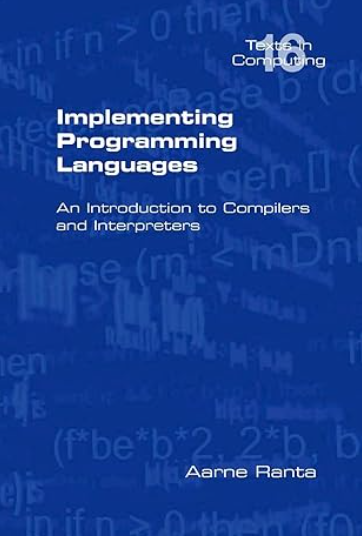- Регистрация
- 27 Авг 2018
- Сообщения
- 37,817
- Реакции
- 546,546
- Тема Автор Вы автор данного материала? |
- #1

Implementing a programming language means bridging the gap from the programmer's high-level thinking to the machine's zeros and ones. If this is done in an efficient and reliable way, programmers can concentrate on the actual problems they have to solve, rather than on the details of machines. But understanding the whole chain from languages to machines is still an essential part of the training of any serious programmer. It will result in a more competent programmer, who will moreover be able to develop new languages. A new language is often the best way to solve a problem, and less difficult than it may sound. This book follows a theory-based practical approach, where theoretical models serve as blueprint for actual coding. The reader is guided to build compilers and interpreters in a well-understood and scalable way. The solutions are moreover portable to different implementation languages. Much of the actual code is automatically generated from a grammar of the language, by using the BNF Converter tool. The rest can be written in Haskell or Java, for which the book gives detailed guidance, but with some adaptation also in C, C++, C#, or OCaml, which are supported by the BNF Converter. The main focus of the book is on standard imperative and functional languages: a subset of C++ and a subset of Haskell are the source languages, and Java Virtual Machine is the main target. Simple Intel x86 native code compilation is shown to complete the chain from language to machine. The last chapter leaves the standard paths and explores the space of language design ranging from minimal Turing-complete languages to human-computer interaction in natural language.
INFORMATION PAGE:
DOWNLOAD:



